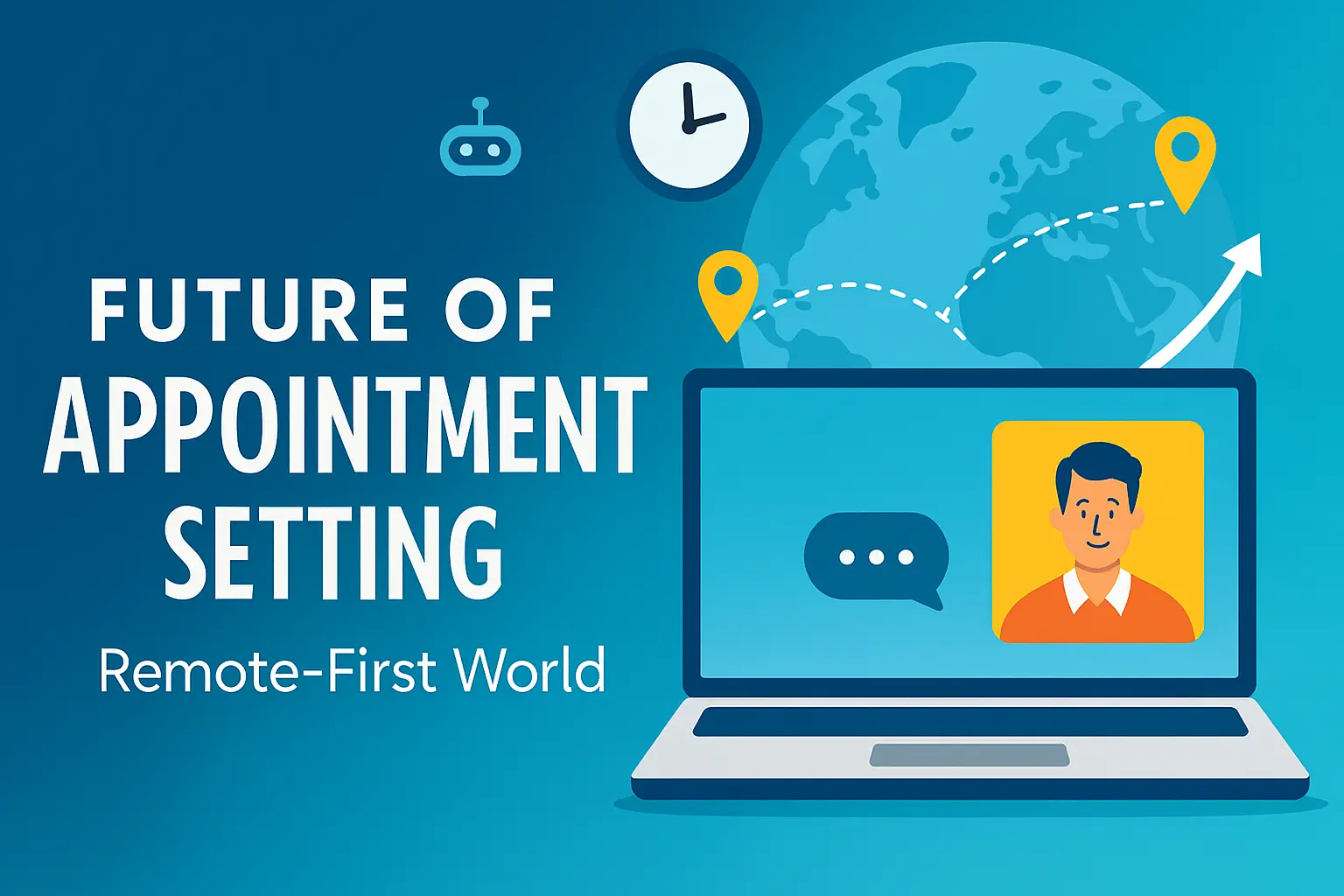Remote work went from optional perk to default setting in less than five years. Buyers now take discovery calls from spare bedrooms, airport lounges, and coffee shops. Appointment setters—whether in-house or outsourced—have to reach those buyers on their terms. Below are the five shifts already reshaping the craft and the practical steps sales leaders can take to stay ahead.
1. Asynchronous Outreach Becomes Table Stakes
What’s changing
Time zones no longer protect anyone’s calendar. Prospects scroll LinkedIn at 9 p.m., clear email at dawn, and open Slack between flights. Cold calls still matter, but they now sit inside a wider, always-on thread of micro-touches.
How to adapt
- Use short video snippets (30–45 seconds) that answer one pain point. Prospects can watch whenever they like.
- Build drip sequences with spacing that mirrors local waking hours—intent data tools can tell you when emails actually get read.
- Shift from “call-heavy Tuesday blitz” to rolling, multi-channel cadences that flex around each prospect’s digital habits.
2. AI Writes Drafts—Humans Add Context
What’s changing
Large language models can shape subject lines, call openers, and objection-handling notes in seconds. Done right, AI frees reps to research industry trends or decode a prospect’s last funding round.
How to adapt
- Treat AI as the first draft, not the final word. Personalize the top 20 % of every message: name, trigger event, business metric.
- Feed models with your own winning calls and emails, not generic public data. Custom training sharpens relevance.
- Measure AI impact on response and show rates; retire prompts that drift into jargon or false claims.
3. Micro-Specialist Pods Replace Full-Stack SDRs
What’s changing
The old “one rep does everything” model drags ramp time and blurs accountability. High-growth teams now split appointment setting into channel pods—voice, email, LinkedIn, events—each run by specialists who iterate faster.
How to adapt
| Pod Type | Core Skill | Best KPI |
|---|---|---|
| Phone | Objection handling | Live connects/day |
| Copy testing | Reply rate | |
| Social sequencing | Comment-to-DM ratio | |
| Events/Webinars | Live chat | Registrations to meetings |
Start with the pod that covers your highest-yield channel, then expand. Shared dashboards keep pods aligned on total meetings booked and revenue influenced.
4. Outcome-Based Pricing Moves Center Stage
What’s changing
CFOs now ask, “Why pay a retainer if we can pay per result?” Providers answer with per-meeting, per-pipeline-dollar, or even revenue-share plans. The structure shifts risk away from the customer and forces relentless focus on conversion quality.
How to adapt
- Benchmark your current cost per qualified meeting (all-in salaries, tools, overhead divided by meetings).
- When evaluating outside partners, request sliding-scale pricing that rewards higher show rates and opp conversion.
- Tie internal bonuses to the same outcome metrics so both sides push the same rock uphill.
5. Compliance and Trust Decide the Shortlist
What’s changing
GDPR, CCPA, and a wave of sector-specific rules tighten how personal data can be stored and used. One mis-filed consent record can trigger fines or stall a funding round.
How to adapt
- Build a single source of truth for consent status—don’t leave it buried in a rep’s inbox.
- Verify that any external team works inside your CRM or a secure shared instance with role-based access.
- Run quarterly audits of opt-in language, data retention, and cold email regulations for each market you serve.
Getting Ready: A Two-Quarter Action Plan
| Month | Action | Outcome |
|---|---|---|
| 0-1 | Audit current outreach by channel, cadence, and geography. | Baseline reply and show rates. |
| 2-3 | Pilot AI drafting for email and LinkedIn. | 15 % faster sequence build time. |
| 3 | Split one high-volume channel into a dedicated pod. | Clear ownership and faster A/B tests. |
| 4 | Negotiate outcome-based pilot with an external team (if outsourcing). | Cost per meeting target locked. |
| 5-6 | Run compliance health check across all prospect data. | Risk surfaced and mitigated. |
Key Takeaways
- Remote buyers value convenience over channel. Meet them asynchronously and you win attention.
- AI accelerates but does not replace human context. Combine automation with personal insight.
- Specialization drives efficiency. Channel pods out-perform one-size SDR roles.
- Outcome-based contracts align incentives. Pay for meetings that move pipeline, not hours logged.
- Trust is currency. Data privacy and transparent processes decide long-term viability.
Appointment setting isn’t fading; it’s evolving. Teams that embrace asynchronous engagement, intelligent automation, and outcome accountability will find their calendars—and their pipelines—filling faster than those clinging to yesterday’s playbook. The remote-first world is here. The question now is whether your appointment-setting strategy is ready for it.
